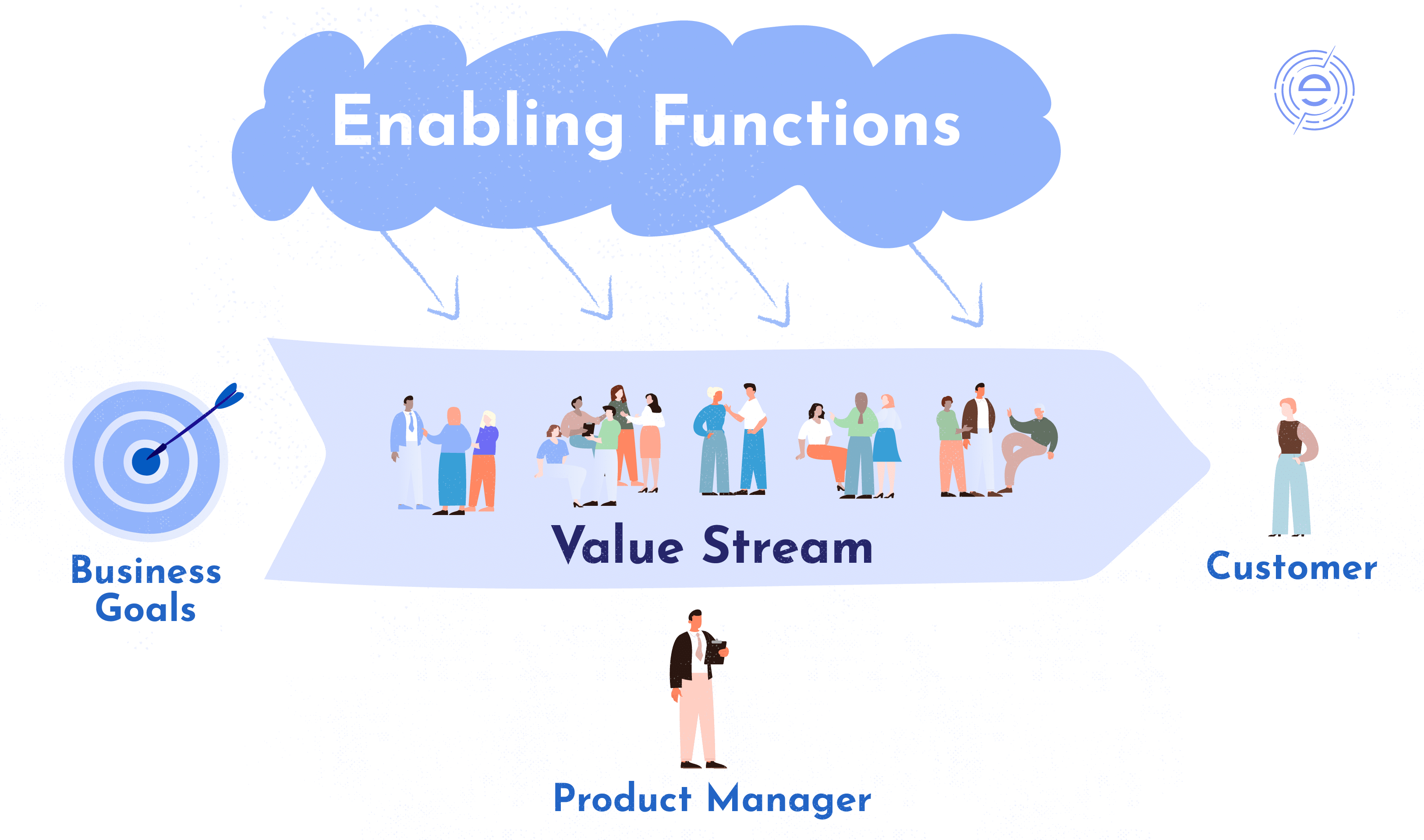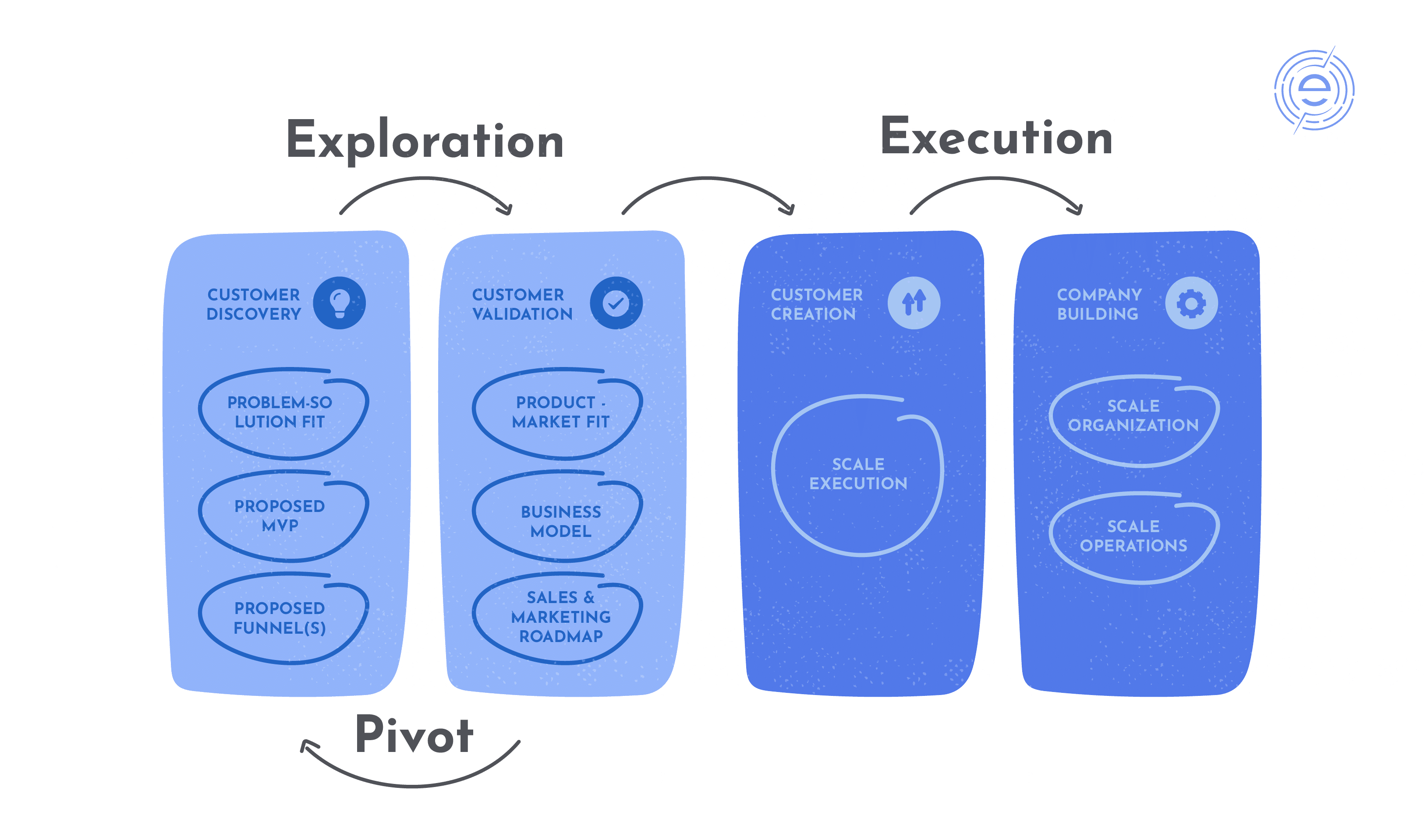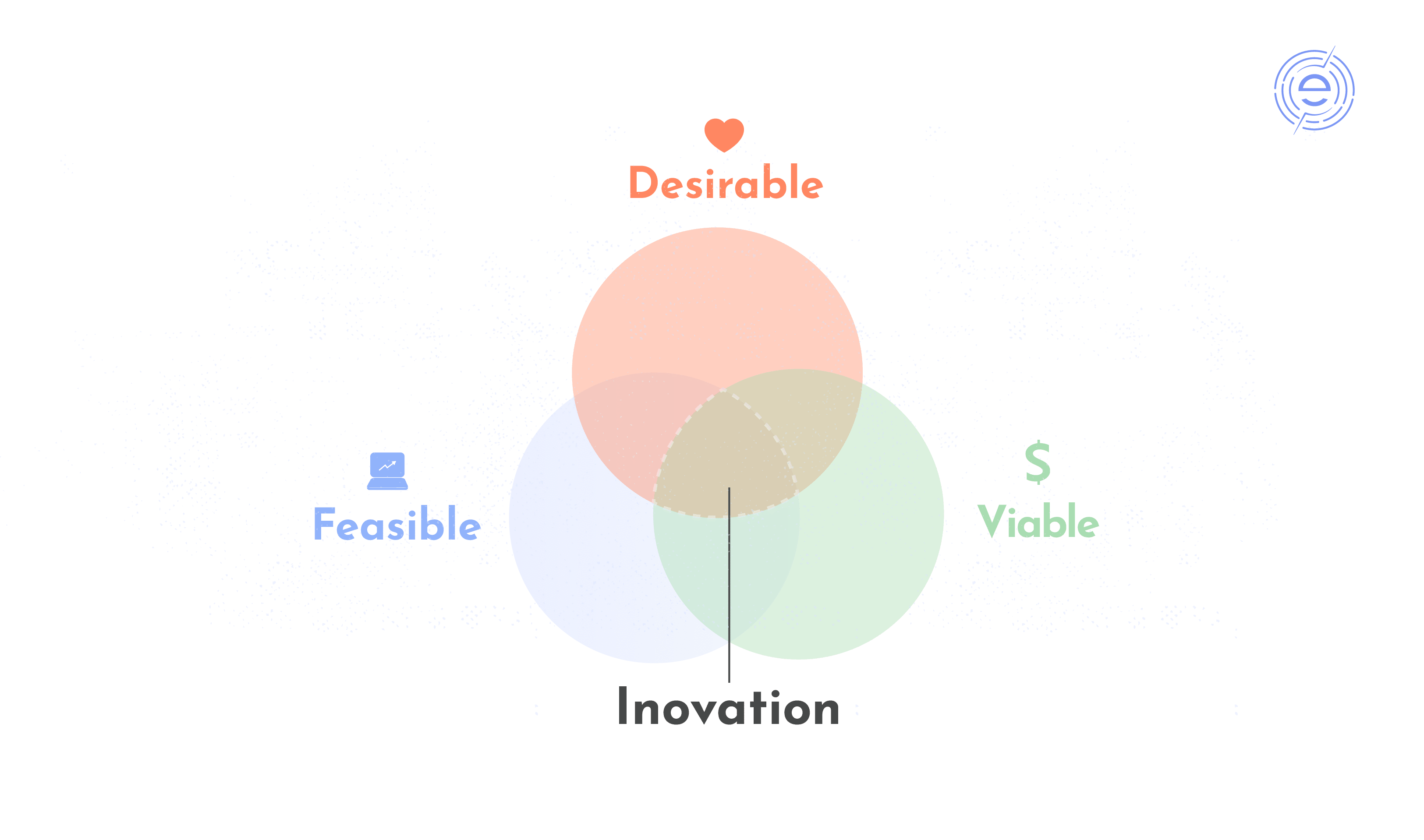Share this
Lean Product Management An Introduction For Leaders
by Gerard Chiva on Jan 13, 2024 3:19:09 AM
Lean Product Management is the digital product management methodology that ensures effective management of product life cycle and success in the market.
ADAPT Methodology® is a unique Digital Product Development framework to change traditional project-centric companies toward product-led companies!
Society changed and leaders need support in the way how they lead and design their digital product organizations, that is the reason why the ADAPT Methodology® was created, but now let’s get a deep dive into the “Lean Product Management” topic.
Success means a withdrawal in time dedicating resources to another strategic initiative, pivoting to change the focus of our product, or achieving a sustainable and scalable business model that far exceeds the initial investment.
Lean Product Management is a methodology that covers the entire life cycle of the digital product, from the idea to the withdrawal, providing the necessary practices, techniques, and tools so that the product teams can build successful products.
But it is not only that, Lean Product Management requires certain practices, processes, and organizational structures to ensure success. The implementation of this methodology in matrix organizations or companies with many silos and bureaucracy will be limited in its effectiveness.
Lean Product Management is a methodology that combines practically and effectively the principles and practices of Lean, Lean Startup, Lean UX, Behavioral Economics, Competitive Strategy, and Metrics.
The Problem
90% of startups fail and between 40% and 70% of new products do not get enough traction in the market, there are several reasons for this: dysfunctional organizational structures, ineffective and inefficient processes, the wrong mentality, or inappropriate methodologies, practices and tools.
Money, talent, and time are still wasted on developing products that are not of interest to anyone.
Therefore, the organizational principles of Lean, which revived Japan's postwar economy, and especially Toyota, are nowadays more necessary than ever for digital product management.
Companies need value-oriented organizational structures, new digital product management techniques, and a new mentality.
Lean Product Organization
Organizations face a crucial challenge today. The pace of change, customer expectations, technological disruption, and volatility, in general, make the mental and organizational structures of the last century useless in the 21st century.

Companies need to structure themselves to become true lean product organizations, and for that, they require a very specific and fundamental role for success. The Digital Product Manager. But, neither the Product Owner, nor traditional product managers, nor Business Development Managers can develop that role successfully.
The Digital Product Manager is responsible for the product strategy, the design and evolution of a sustainable and scalable business model and for coordinating all efforts for the iterative and incremental evolution of a product that delights customers and generates business growth. She is ultimately responsible for the success of the product.
Lean Product Management methodology includes the fundamental techniques that any Product Manager must master today to develop successful products. But Lean Product Management is not enough without the appropriate organizational structures, processes and mentality.
Digital Lean Product Manager
The current high demand for Digital Product Managers is indicative of a trend towards the professionalization of product teams and a change of mentality in companies to improve digital product management.
The lack of qualified talent in most developed economies is evident. Companies face the need for great growth and the lack of qualified profiles and high turnover, especially for software development profiles, product owners and product managers.
For companies to grow rapidly without losing speed and agility, they need to be structured in autonomous product teams led by a Product Manager with proven experience in Lean Product Management. This person is responsible for start to finish the success of the product, including strategy, P&L, budgeting, sales, marketing, go-to-market, and development.
This requires fundamental skills, such as product strategy, market research and prospecting, product discovery, metrics, competitive analysis, pricing, business models, marketing, results-oriented management, customer development, operations, etc …
The Digital Product Manager is a professional with a combination of technical skills, business and digital product management techniques very difficult to find. And, in the end, what companies end up hiring when they look for a Digital Product Manager is one of the following profiles:
- Product Owners without business skills
- Agile, Lean and Lean Startup Skills-Free Business Profiles
- Technical profiles with no experience in modern product management.
This situation means that people with important skills gaps end up leading the products. Therefore, if we want to solve these knowledge gaps, what is needed is a modern and effective global approach to digital product management, which is what Lean Product Management provides.
Lean Product Management
Due to the momentum of the agile and Lean Startup methodologies and the rapid change we are experiencing, the role of the Digital Product Manager has become a fundamental piece for those companies that want to develop successful products, innovate and lead their markets.
For this role to be successful it requires a reorganization of the value flow in Value Streams or autonomous Product Teams.
If we put an expert Digital Product Manager in an organization by silos or functional units she will get frustrated. On the other hand, if we put an inexperienced role in a lean product organization, she will not be able to lead development and innovation successfully.
Digital Product Managers require some basic skills like any other leader: emotional intelligence, negotiation, leadership without authority, communication, public speaking, etc. We take that for granted. However, there is a set of skills and practices that great product managers must master to lead product teams toward business growth and customer satisfaction.
And, that is what Lean Product Management is about and we cover this in the following modules:
- Product Life Cycle
- Business Models
- Achieving Product-Market Fit
- Product Strategy
- OKRs
- Lean Product Roadmap
- Prioritization Techniques
- Metrics
Let's briefly review each of these topics.
Product Life Cycle
Effective digital product management requires understanding that the product life cycle is not only a theoretical issue, but it must be understood that each stage of the life cycle of a product requires different techniques, practices, tools, and decisions.
The consequence of not understanding this can lead to premature escalation or to dedicating too many resources to a product that should still be in the exploration phase.
We can identify the following stages and sub-stages in the life cycle of any product:
- Ideation
- Exploration
- Problem-Solution Fit
- Product-Market Fit (Validation)
- Execution (Scale)
- Growth
- Sustain
- Retire

Lean Product Management helps us understand each of these phases, and what decisions, metrics, and activities it implies for successful digital product management.
Your prioritization mechanisms and your investment decisions are different in each of the phases.
Business Models
Many companies are still governed by opinions and illusions. In some cases, this translates into investing many resources and developing an idea until you have a product that does not interest anyone, or in other cases, this is reflected in the accumulated waste in the preparation of a business case of 50 pages full of opinions, illusions and lies that is handed over to the development team to execute.
Modern digital product management requires a Lean approach to business modeling. From the idea to the withdrawal of the product, we are continually evolving the business model.
The business model can be the difference between success and failure of the same product. In other words, your product is your business model and you should iterate and evolve it gradually from the beginning.
 The Digital Product Manager has to determine the main risks and the amount of uncertainty. In the same way, as in agile software, development, the delivery is divided into small chunks to reduce uncertainty, risk and improve the flow, Lean Product Management uses the same principle but applied to the business model, where we have a business model hypothesis and experiments to validate or falsify those hypotheses.
The Digital Product Manager has to determine the main risks and the amount of uncertainty. In the same way, as in agile software, development, the delivery is divided into small chunks to reduce uncertainty, risk and improve the flow, Lean Product Management uses the same principle but applied to the business model, where we have a business model hypothesis and experiments to validate or falsify those hypotheses.

Achieving Product-Market Fit
Product-market fit is the most important milestone in the life of a product.
To achieve Product-Market Fit, you must be able to gain traction in the market by evolving an MVP until you reach a point where you can safely accelerate growth.
A key point of the Lean Product Management methodology and digital product management is the definition of what is included in the first MVP, and its iterative and incremental evolution based on market feedback, appropriate metrics and the business model.
Product Strategy
A product strategy is reduced to correctly answering the following two questions:
- Where to play?
- How to win?

From the first moment, we have an idea, we must be able to answer with certainty to those two questions. We have to be focused on which markets and customers we want to target and what is the strategy to win their hearts and wallets.
You are always competing against something or someone else. Therefore, you must be clear how you plan to win. Even in new markets, you are competing against non-consumption.
The core of the strategy work is always the same: discover the critical factors in a situation and design a way to coordinate and focus actions to address those factors. The most important responsibility of a Digital Product Manager is to identify the biggest challenges in advance and design a consistent approach to overcome them.
OKRs - Embedding Strategy into Execution
Assuming you have a good product strategy now you need to make sure that everyone is rowing in the same direction and that information flows to update your strategy if necessary.
Embedding strategy into daily operations is also a great pain point for many organizations and with OKRs (Objectives and Key Results) we can make that happen.
OKR is in Lean Product Management the method to set goals that allow you to connect strategy with execution and enable decentralization and leadership at all levels of your organization.
Lean Product Roadmap
Product Roadmaps have a purpose, however, the traditional implementation creates more problems than it solves.
With a results-based roadmap, we connect our business objectives with delivery while keeping the entire company aligned and providing the necessary predictability at the strategic level.
A Lean Product Roadmap is a strategic communication tool that represents a prototype of your product strategy and connects your vision with the implementation. The Lean product roadmap is not oriented to product delivery on certain dates, but to achieve results for the company and benefits for customers.
Prioritization
Product managers are constantly asking themselves a question: what should we do next?
Lean tries to do the right thing, at the right time, in the right amount. And, to achieve that, we must have information available that allows us to make the right decision.
Prioritization is the result of an equation between business risk, uncertainty and the money we have. However, to prioritize correctly, some things must be clear before, otherwise, we are constantly improvising:
- Business model
- Product life cycle
- Purpose, vision and principles
- Business strategy
- Business goals
- Product vision
- Product strategy
- Product goals
- Metrics framework
- Economic framework
If any of the above points are missing, our prioritization will be a constant headache and we will be at the mercy of arbitrary, political, and illusion criteria. On the contrary, if all the points on the list are clear to everyone in the organization, the prioritization should be a matter of seconds for anything in progress; from great initiatives to stories of individual users or technical tasks.
Lean Product Management helps us properly prioritize the most important jobs for customers, expected results, unresolved needs, experiments, functionalities to be incorporated into the MVP, assumptions, and results.
Metrics
This is probably one of the main weaknesses in digital product management. Despite the amount of data available and the analysis tools, product teams and organizations use the wrong metrics to make the wrong decisions at many different levels.
The most important thing to know here is that, at any time, according to your product strategy, your business model, and the stage in the product life cycle in which you are, there are only a few metrics that you should consider.
A Digital Product Manager knows it. Having too many or too few metrics is a mistake. What you have to do is change the metrics according to the evolution of your business.
Each product must be managed with a reference framework of metrics that help us make decisions quickly and efficiently.
Did you like this article?
We enable leaders to become highly valued and recognized to make an impact on the World by helping them to design Digital Product Companies that will thrive and nourish in the Digital Age, we do this by applying our own ADAPT Methodology®.
If you are interested in knowing if you have what it takes to design and build a great digital product company simply take our Digital Leadership Influence Scorecard.
If you want to know how we can help you to start your transformation please check out our: Training.
If you are interested in doing a transformation in your company please check out our: Consulting.
Share this
- Scrum (14)
- Agile Methodologies (13)
- Product Mindset (11)
- Project To Product (10)
- Communities Of Practice (8)
- Knowledge Sharing (8)
- Time To Market (8)
- Continuous Improvement (5)
- OKRs (5)
- Product Strategy (5)
- Strategy (5)
- Product Discovery (4)
- Product Owner (3)
- Technical Excellency (3)
- Innovation (2)
- Scrum Master (2)
- Team Building (2)
- Cost Of Delay (1)
- Design Thinking (1)
- Google Design Sprint (1)
- Lean Budgeting (1)
- Lean Change Management (1)
- Organisational Impediments (1)
- Product Metrics (1)
- Product Roadmaps (1)

Organisational Mastery
Get your free copy

ADAPT
Get your free copy

Product First
Get your free copy

Scorecard
Take The Test




